It’s now a whole year since we set off on our career break. While adapting to life in a pandemic, we’ve done some video editing, some reminiscing and a little maths, which we’d like to share.
In this post, we will share the logistical information behind our South East Asia trip. Specifically: how long we had in each place, how much money it all cost, transport and recommendations. Just in case you’re planning a post-covid getaway – it’s not as costly as you might think!
But first, a video summary of our trip. You can tell vlogging is not our forte, please excuse all the portrait videos at the beginning 🙂
How Much
As well as its beauty, South East Asia is known to have cheap living costs by Western standards. Little wonder it’s so popular for backpacking. Our 8 week trip came to a grand total of £3,700 each, including some large expenses that won’t apply to most travellers. Comparatively, a recent trip to New York set us back over £1,000 each, for less than 1 week. Sometimes it pays to travel further afield…
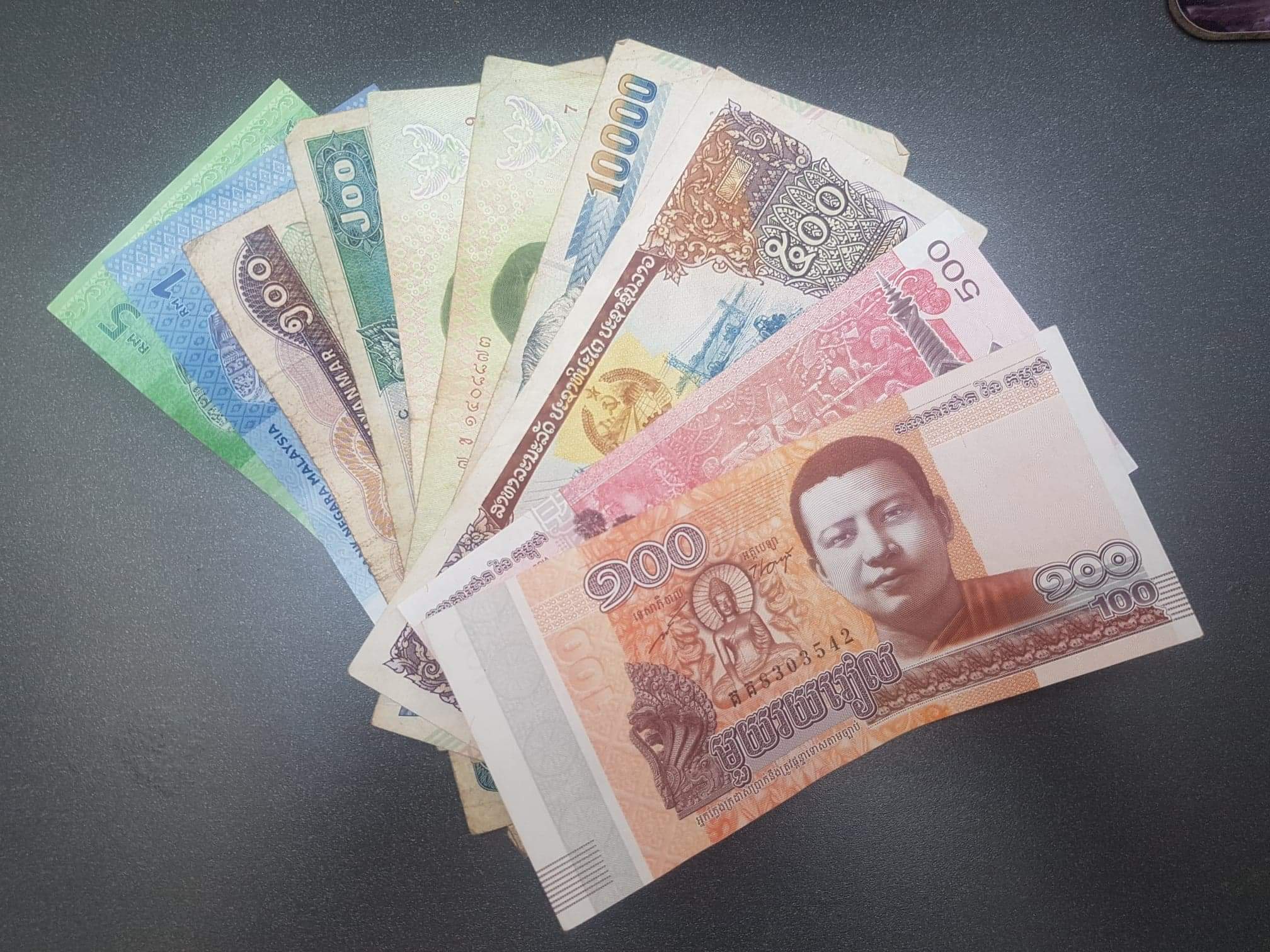
Flights were the single largest expense of our trip, which will come as no surprise given we averaged 3 days in each place. We typically stayed in 2-3 star hotels, at around £25 per night (£12.50 each). Adding three meals a day, local transport and attraction costs, our daily spend came to £56 per person.
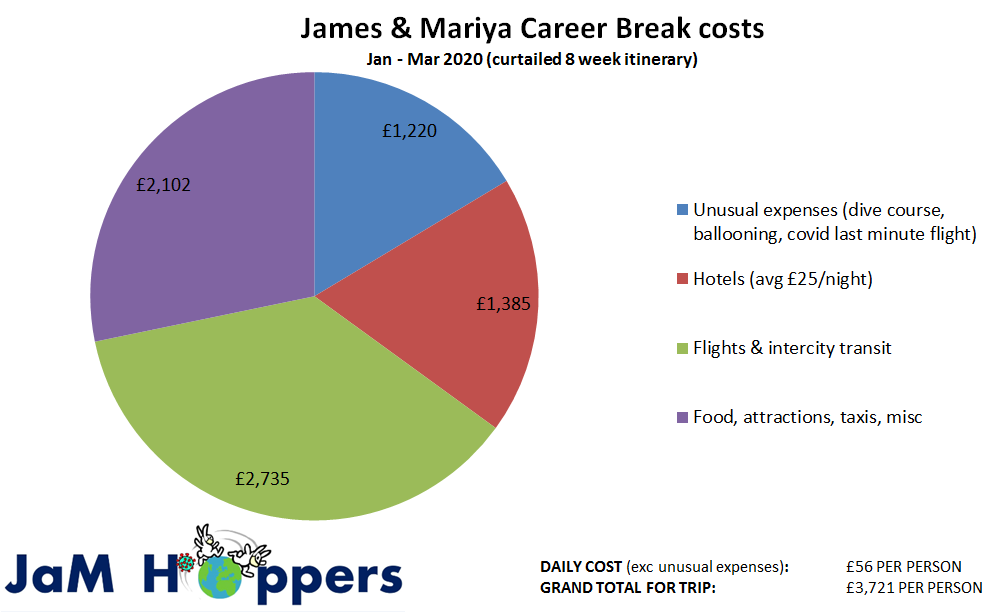
The costs we are excluding from this £56 figure are those in the blue segment of the chart. These were either optional or would not apply to most travellers:
– Our scuba diving course;
– A hot air balloon flight over Bagan; and
– A last minute flight we took to Cambodia, when we were denied entry to Vietnam due to coronavirus restrictions.
How Long
7 days in Malaysia
Kuala Lumpur (2 days)
We began our trip in Kuala Lumpur, which we reached from London via Singapore. We were able to book this as a return flight (with Singapore Airlines) and did so during a sale, so our return flights came to £480 each. If you are based in the UK, we would highly recommend signing up to free email alerts from Jack’s Flight Club, which we use to stay informed about flight sales such as this one.
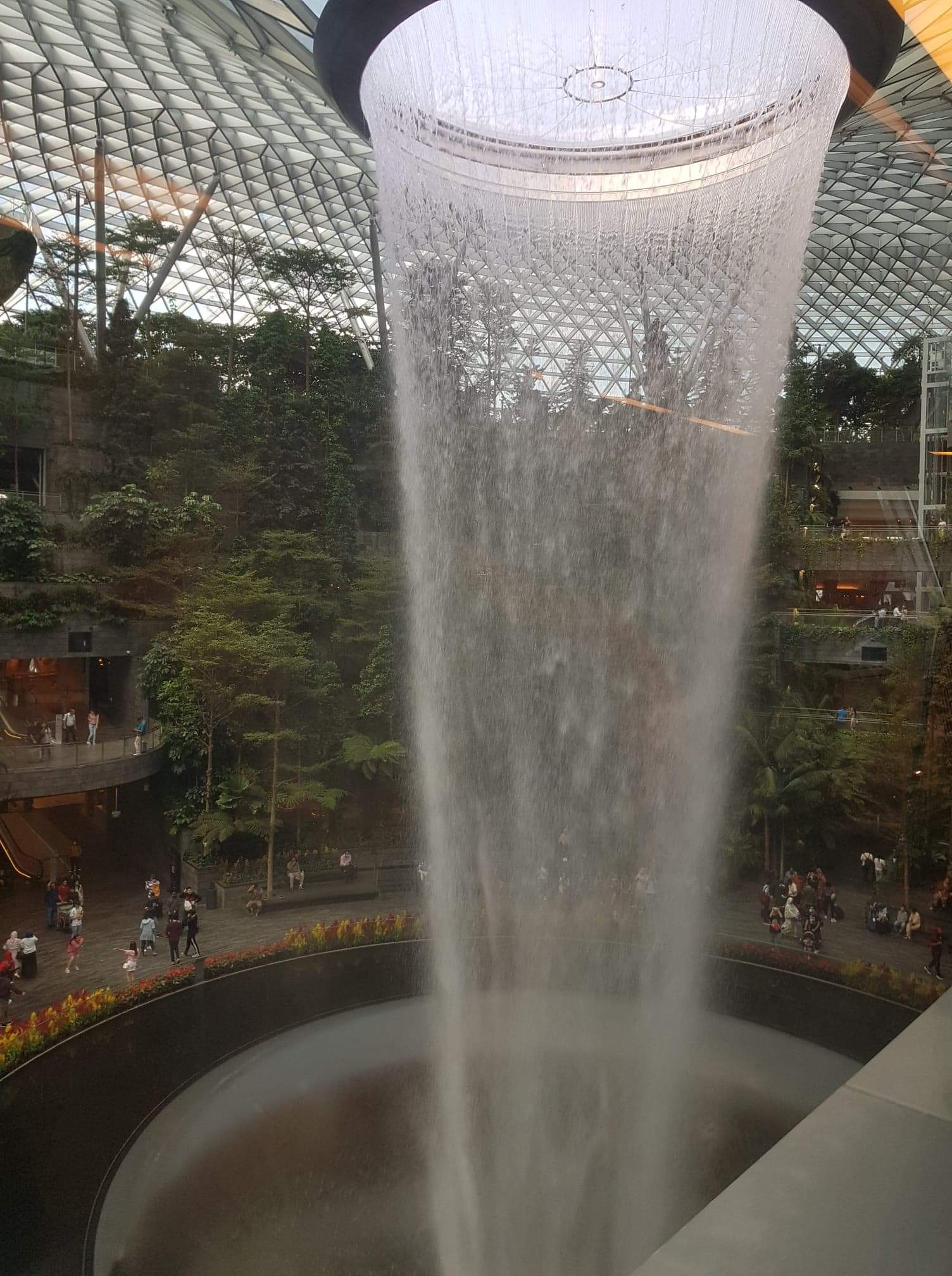
Kuala Lumpur airport is a fair distance from the city. A taxi is by far the most convenient way to get between the two. Of the few attractions we saw (due to jet lag), we would recommend visiting Batu Caves. You can get there via local commuter train (which cost 50p at the time we visited). Note that you are allowed to wear shoes to climb the steps, but be sure and dress modestly. One other pointer; if you’re interested in ascending the Petronas Towers, you must book a ticket several days in advance.

Ipoh (2 days)
Getting to Ipoh from Kuala Lumpur was incredibly straightforward. At the time we visited there were multiple daily trains, lasting 2.5 hours and costing around £7. Within Ipoh, highlights were the Old Town Murals & Heritage Walk (we particularly liked the area around Plan B restaurant) and Perak Tong Cave Temple. Perak Tong is easiest accessed via Grab. Grab is a taxi hailing app (a bit like Uber) well worth downloading for South East Asia.
Georgetown (3 days)
The 2 hour train from Ipoh to Butterworth cost us less than £9 each. From Butterworth train terminal, there is a regular ferry crossing to Georgetown which from memory cost less than £1 for both of us. Georgetown, though perhaps less quaint than Ipoh, has a lot to offer in terms of attractions. We found 3 days ample time to get around the various temples – most notable for us was Kek Lok Si, an enormous complex with lovely views back across the city. We also thoroughly enjoyed the view from Penang Hill (again, worth booking the funicular – but this can be done the day before once you’ve planned a time). One other notable mention goes to the UNESCO area, which was full of fantastic cafes, religious buildings and art installations.
16 days in Myanmar
Yangon (3 days)
Myanmar may not seem the most logical next destination considering Thailand was on our agenda, but due to time restrictions and entry requirements, we flew into Yangon from Georgetown (via Kuala Lumpur). Once again we relied on Grab to get us a taxi from the airport, which was very cost effective. We would also recommend purchasing a sim card in Myanmar for Grab – we opted for an MPT sim card, which we got from a local mall. A 4GB data package plus SIM set us back around £3 and the shop staff set it up for us.
We found 3 days more than adequate to see the main attractions in Yangon. Our favourite was undoubtedly Schwedagon Pagoda, which we visited just before sunset. The golden bell in the evening twilight, surrounded by young monks, invoked an atmosphere we will never forget. There are many other pagodas in and around the city, but this is the one not to miss. Prior to our visit we thoroughly enjoyed eating at 999 Shan Noodles – a small, inexpensive restaurant serving traditional Burmese food just one block North of the City Hall. Well worth stopping by. One final piece of advice for those planning to ride the circular train – this is widely used by commuters so avoid taking the trip at rush hour!
Ngapali Beach – Thandwe (3 days)
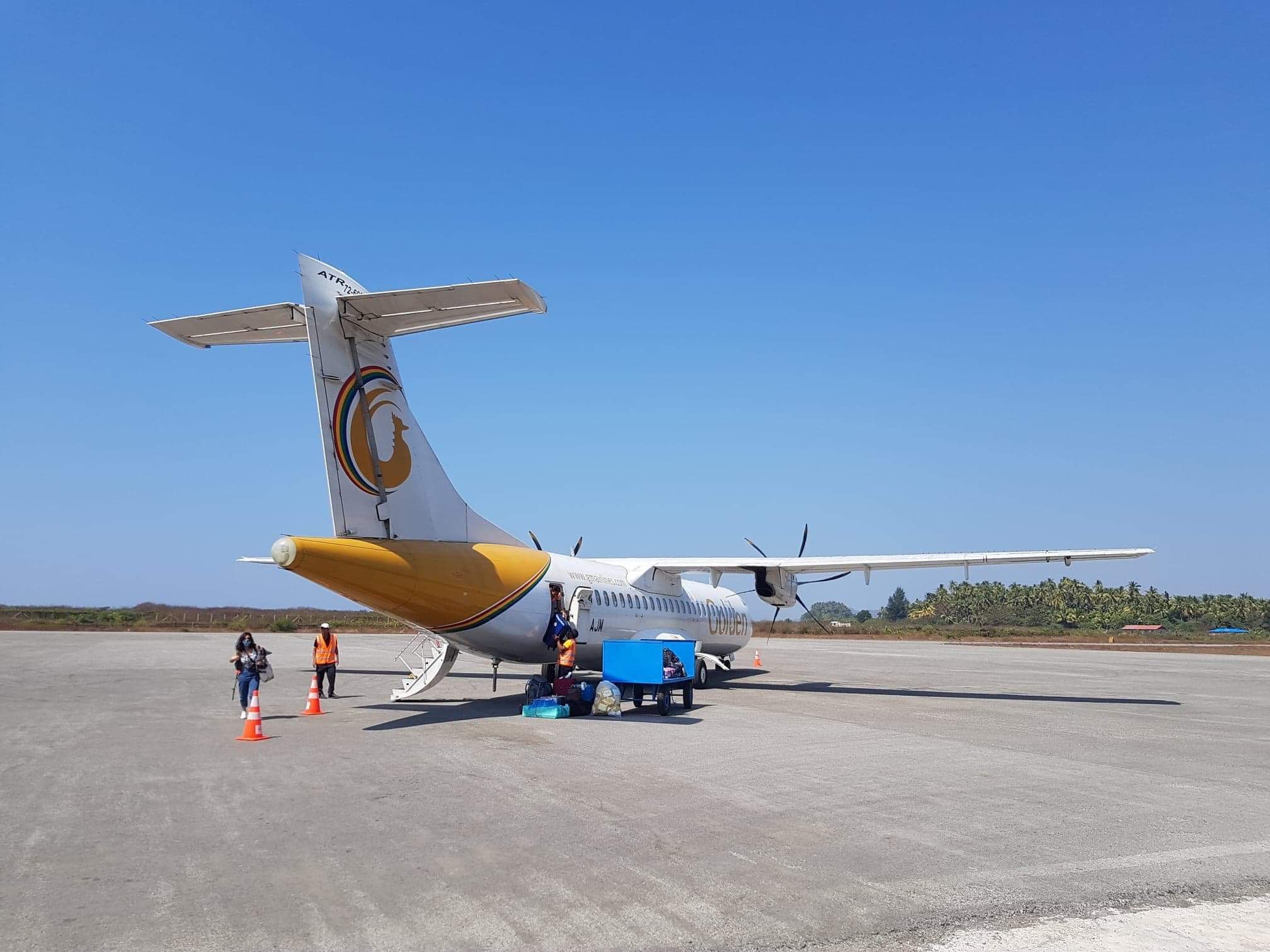
There are daily flights between Yangon and Thandwe. Having visited the main Ngapali Beach, we would strongly suggest staying at the more Northerly bay (where you will find Hotel ACE and Yoma Cherry Lodge). Though smaller, this bay is much less crowded than the main Ngapali bay and just as picturesque.
Bagan (4 days)
We reached Bagan by flying from Thandwe via Yangon – not the most straightforward route, but still quicker than by road. Bagan was undoubtedly our favourite place in Myanmar. Four days was adequate, although we could’ve easily stayed longer. There are a lot of great hotels and restaurants to choose from, most located in New Bagan. Our advice would be to rent eBikes to get around (these are basically electric mopeds and cost less than £8 per day). After taking a taxi tour on our first evening, eBikes were a much more fun way to explore and led to us being the only visitors at many of the temples.
If you have room in your budget, you absolutely must take one of the sunrise balloon flights. You can haggle on price if you’re there off season but it won’t be cheap. The experience is well worth the price though, we both look back on this as one of the best parts of our trip. We ended up flying with Oriental Ballooning who had some of the first balloons up at sunrise and the last balloons down. We were particularly lucky with weather conditions, managing to stay in the air for well over an hour. We would highly recommend Oriental Ballooning for the experienced pilots and overall customer service.
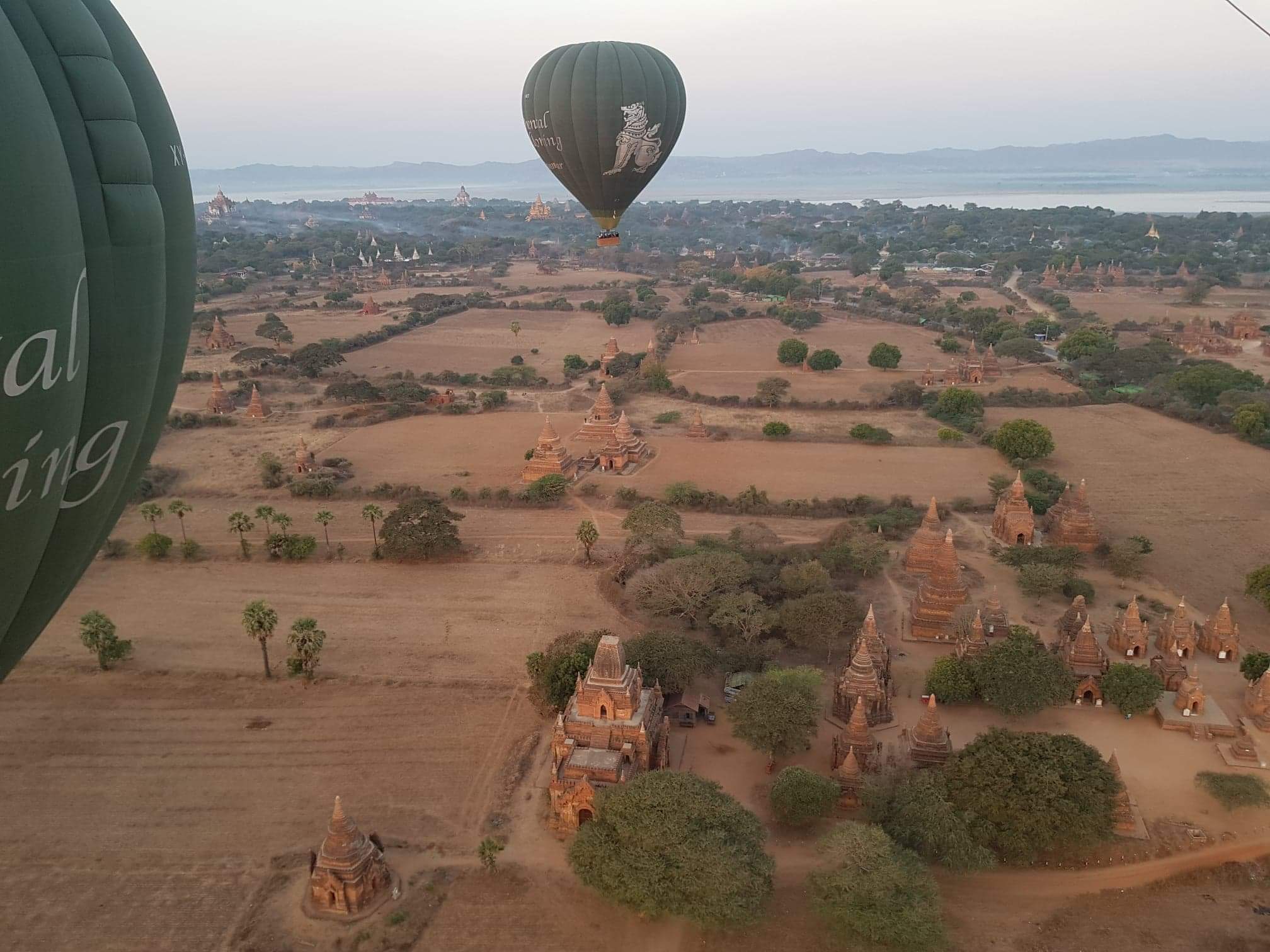
Inle Lake – Nyaungshwe (3 days)
We travelled from Bagan to Nyaungshwe (Inle Lake) via a VIP Night Bus provided by JJ Express. The roads were windy so we didn’t sleep much, but the bus was cheap, comfortable and included an evening snack. We also arrived much earlier than scheduled after around 7 hours (compared to 11 hours on the timetable), so make sure your hotel has a 24h reception. Inle Lake is the main attraction and you will no doubt be approached by several boatmen offering to take you on a tour if you wander by the river. We would highly recommend a meal at Dim Sum House if you enjoy authentic Chinese food.
Mandalay (2 days)
After Inle Lake, once again we travelled via JJ Express Night Bus to Mandalay rather than flying. Unlike the previous bus, we stopped for a full meal which was provided late evening. Despite this stop we still arrived early, around 3 hours ahead of schedule (3:30am or so – our hotel porter was a saint for letting us in so early)! Our favourite thing to do in Mandalay was to head to Inn Wa archaeological zone and U-Bein bridge.
15 days in Thailand
Bangkok (3 days)
After flying from Mandalay to Bangkok, we took the airport shuttle train to the city centre, then a tuk tuk to our hotel. We gave ourselves 3 days in Bangkok before moving on, which was more than enough. During that time we enjoyed visiting the train market, the floating market and various temples.
Krabi (2 days)
After Bangkok we flew to Krabi (Ao Nang), gateway to many of Thailand’s beaches and islands. We chose Krabi over Phuket after researching which islands were nearby, though some of the islands are accessible from both bases.

Koh Jum (2 days)
After 2 nights in Krabi, we chose Koh Jum as our first island after reading reviews about how secluded and peaceful it was. The transfer (ferry -> small boat -> wading up to the shoreline) came as an unexpected surprise, but thankfully the water was calm. Again we spent two days there before moving on. Many of the visitors we met were staying for longer, however there are not many attractions on the island. Small islands like Koh Jum tend to have one daily boat transfer option, which needs booking the day before otherwise it may not sail.
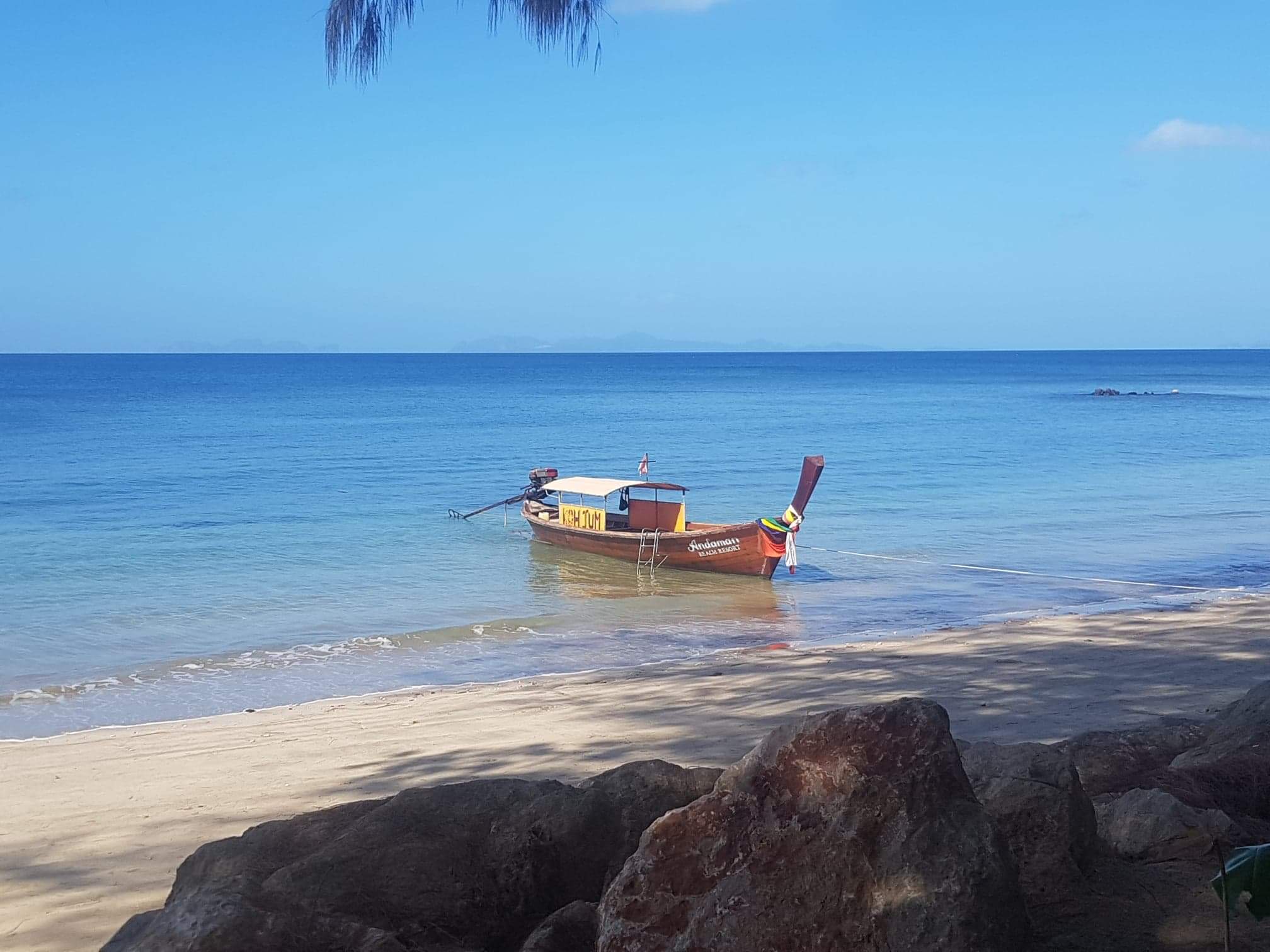
Koh Phi Phi (3 days)
For a change of pace, we chose to visit the popular island of Koh Phi Phi next. There are several large ferries between here and Phuket / Krabi each day, plus speed boat transfers to / from some other islands (such as Koh Jum). Here we spent almost 3 days, but had to return to Ao Nang via the last ferry on day 3 for our flight out of Krabi airport the following morning. Bamboo Island was a definite highlight, as well as the Koh Phi Phi viewpoint.
Chiang Rai (2 days) and Chiang Mai (2 days)
Our next Thai destination was Chiang Rai, which we reached by flying to Chiang Mai then transferring via GreenBus (a 3-4 hour journey depending on roadworks). This is somewhere we’d have appreciated a little extra time. In our 2 days there we managed to see everything on our itinerary, but we didn’t get to fully enjoy the night bazaar and evening entertainment. We also had to miss various outdoor expeditions which we didn’t know about in advance. Finally, we returned to Chiang Mai by GreenBus for our final 2 days in Thailand.
10 days in Laos
Luang Prabang (4 days)
Once again we flew to get from Chiang Mai to Luang Prabang, however there is also a river boat (from Chiang Rai) which we could have taken. We ruled this out when planning our route after reading it takes more than a day. From discussions with our B&B host though, it turns out there is also a speedboat option which is much quicker.
Luang Prabang is a charming small town. Many of the travellers we spoke to did not stay for long, but after a week of beach hopping we gave ourselves 4 days to allow some rest time. Once there, we were also able to book a minivan transfer to Vang Vieng, which took around 4 hours. We booked this via our hotel, though there were multiple agents throughout the city offering the same service for a similar price.
Vang Vieng (3 days)
Before we arrived, we were a little sceptical about Vang Vieng as a tourist destination, having read numerous accounts of its drug fuelled past. Thankfully, those days are indeed a thing of the past. The tourism industry there today is geared towards adventure trips (hiking, rafting, climbing and such). 3 days was plenty for us to see the scenery on offer via bicycle and moped. Moped was definitely the better option as the mountain bikes were in very poor condition. Buggy rentals and private tours are also available, though we preferred the freedom to go at our own pace. We would strongly recommend our accommodation, Simon Riverside hotel, for its fantastic setting and view from the (huge) swimming pool.
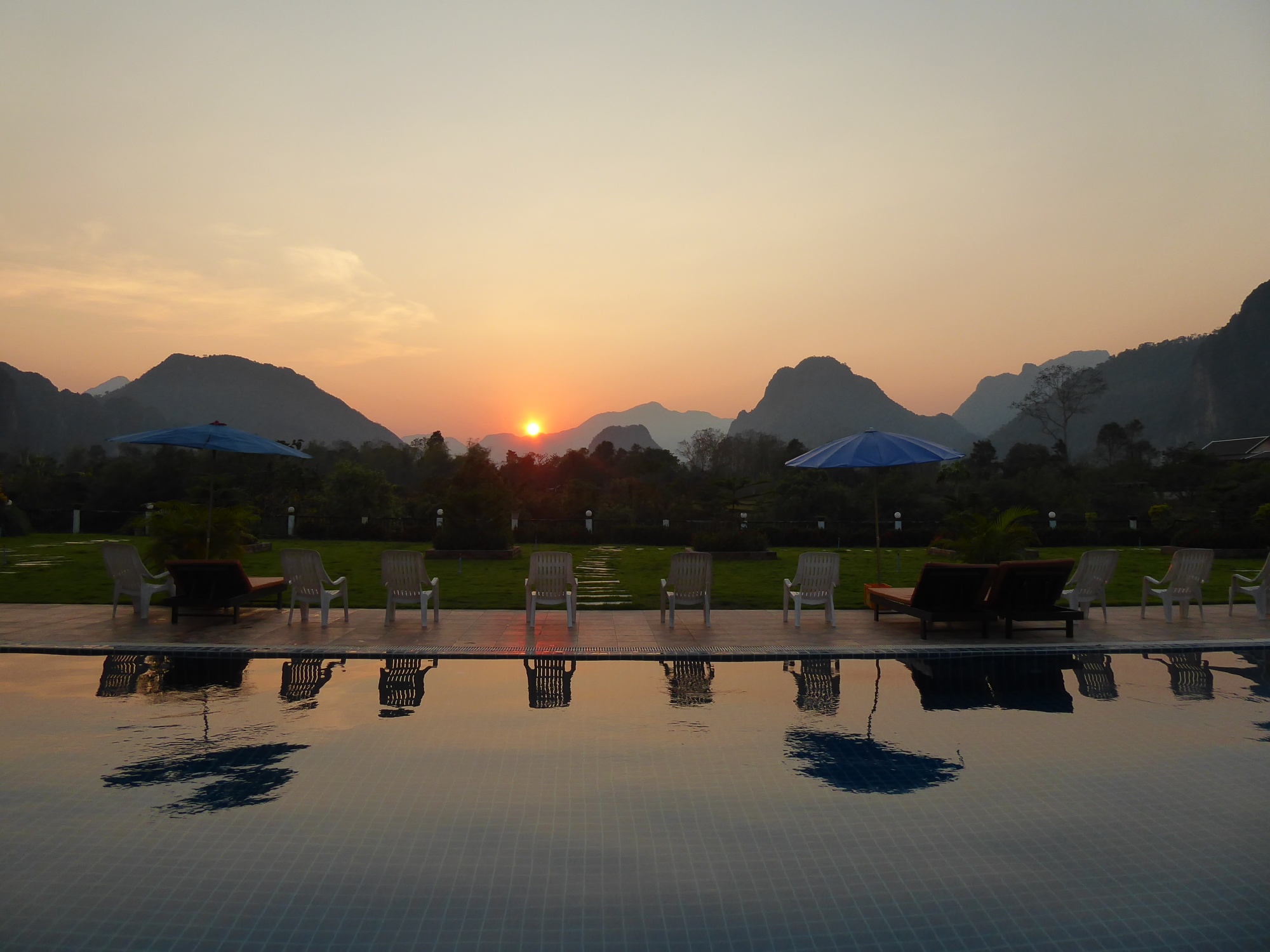
Vientiane (2 days)
Our final stop in Laos was Vientiane, roughly 5 hours away by minibus. We only planned to spend two days there, but ended up booking a third when we were refused boarding for our flight to Vietnam. Further South, the Thakek Loop (a 4 day motorbike ride) and Four Thousand Islands are becoming more popular attractions, however as we were limited for time we did not venture into Southern Laos.
10 days in Cambodia
Phnom Pehn (3 days)
While there is a land border between Laos and Cambodia, this is much further South than Vientane so in the interest of time we opted to fly to Phnom Penh. We had also read stories of tourists crossing the land border being scammed, so did not want to take any chances.
Koh Rong Sanloem (4 days)
We spent 3 days in the capital, before taking the Post Office VIP mini van to Sihanoukville for a ferry crossing to Koh Rong Sanloem, which is definitely doable in a day.
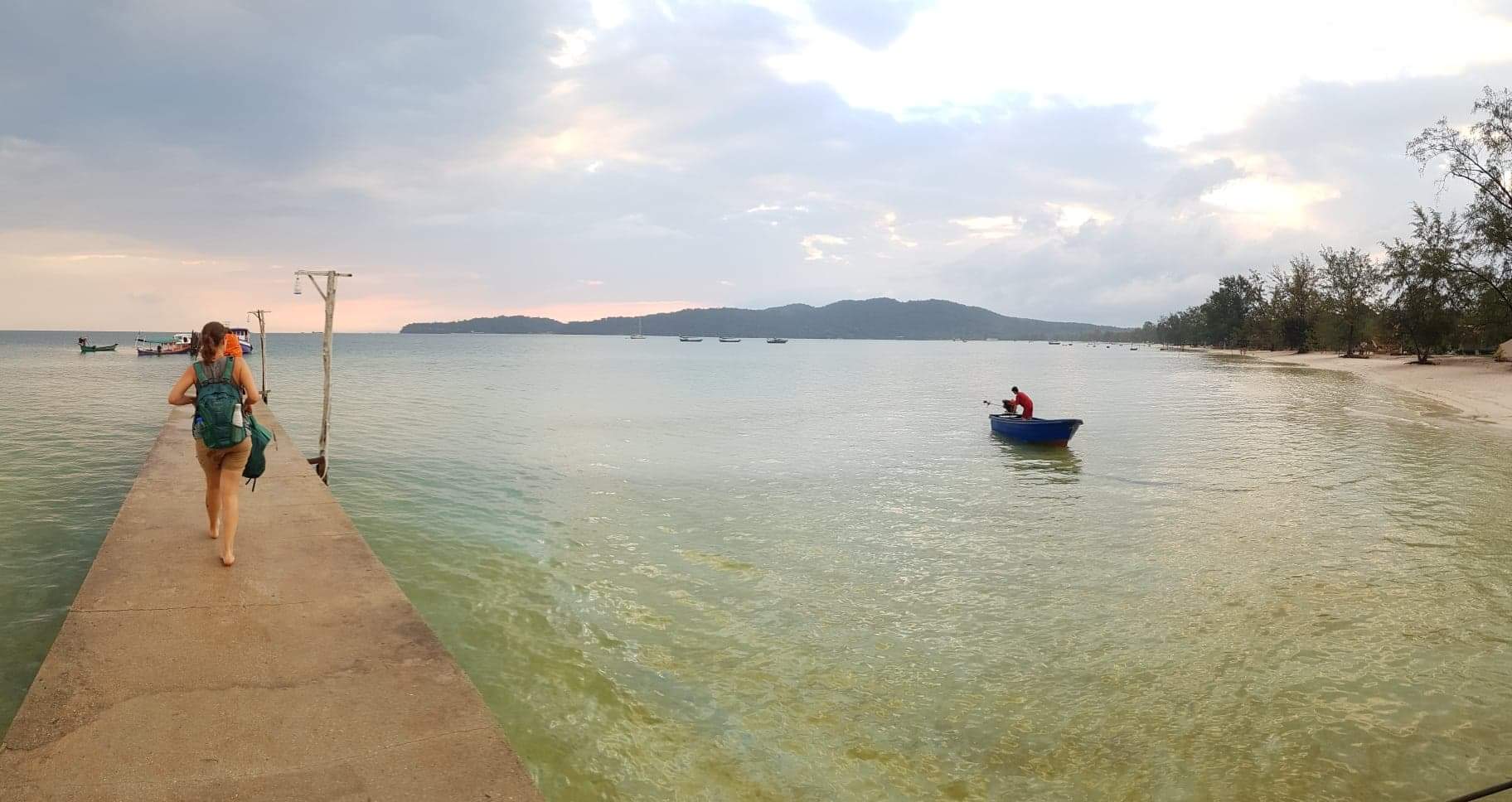
We chose Koh Rong Sanloem over Koh Rong as it was supposed to be less of a party island. From what we saw of Sihanoukville we were glad we chose not to stay there either. There are no roads on Koh Rong Sanloem and consequently very few vehicles. This island really is a retreat. We stayed at Saracen Bay on the Eastern side of the island, but there is even more secluded accommodation available on the West side (around an hours’ walk over bumpy forest terrain – not ideal when carrying luggage). We were pleased with Saracen Bay, as there were a few restaurant choices and a couple of small beachfront convenience shops to pickup essentials.
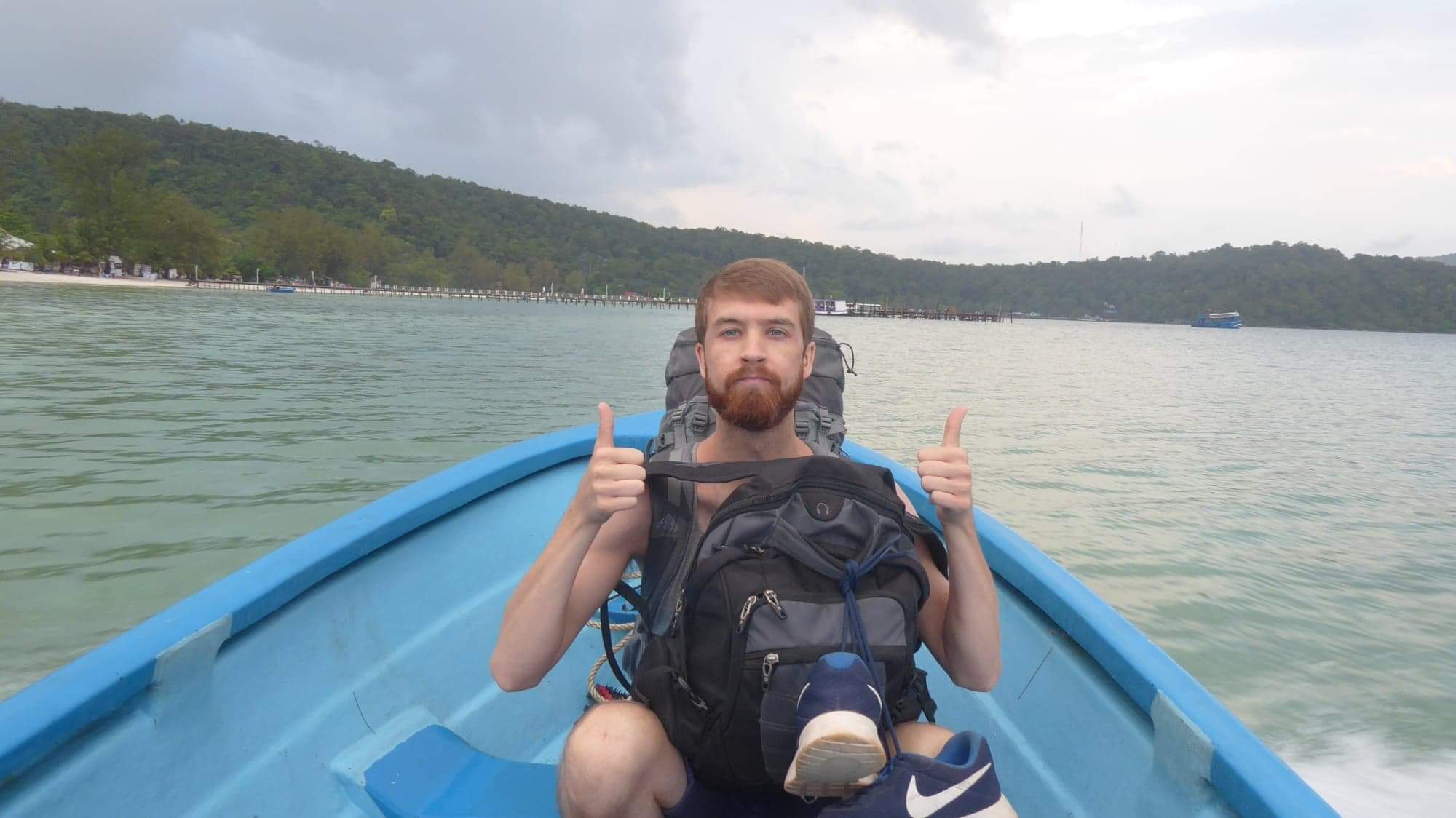
Siem Reap (3 days)
After 4 days in Koh Rong Sanloem and with our trip coming to an abrupt end, we made our way back to the mainland. We took a ferry to Sihanoukville (booked the day before via our hotel) followed by a taxi to the airport (there were loads of drivers waiting where the speedboat docked). Then after our flight to Siem Reap, our hotel arranged a tuk tuk to collect us. The whole trip took 9 hours including time spent waiting at the airport.
Due to the coronavirus pandemic, we had much less time than originally planned to explore Angkor Wat. Our 3 days (closer to 2 full days) was sufficient, but we were very rushed and had 2 busy days with a private tuk tuk to allow us to see as much as possible. Our original plan would have given us 4 full days, which we feel would have been a much better length of time.
Summary
It’s possible to travel even cheaper than we did if you’re willing to stay in hostel accommodation. Not only will the rooms cost less, but you’d be able to prepare food using their kitchen equipment, hence saving money by not eating at restaurants. For us local food was part of the experience so we had budgeted for restaurant meals. If we had more time though, we would have chosen to fly less, which is cheaper and also much more environmental.
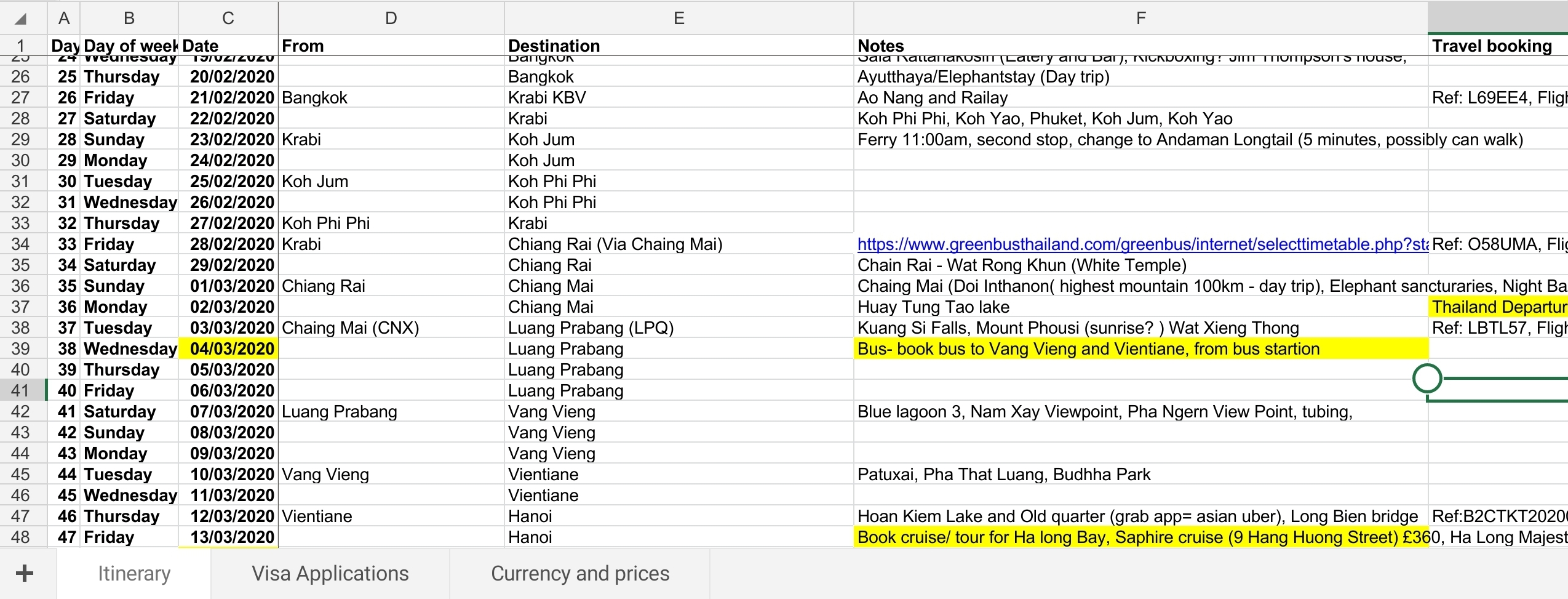
As we’ve hopefully illustrated above, it’s possible to see a lot in a short time without breaking the bank. The pace we took may not suit everyone, but we wanted to make the most of the limited time we were able to take off work. We did quite a bit of research in advance to narrow down what we wanted to see, although most days we finalised our plan the night before. The vast majority of tour operators are happy to accommodate at the last minute. Do research the larger attractions in advance though as some require booking ahead. If you are planning to visit South East Asia, hopefully some of these recommendations will help you. Thanks again for reading!

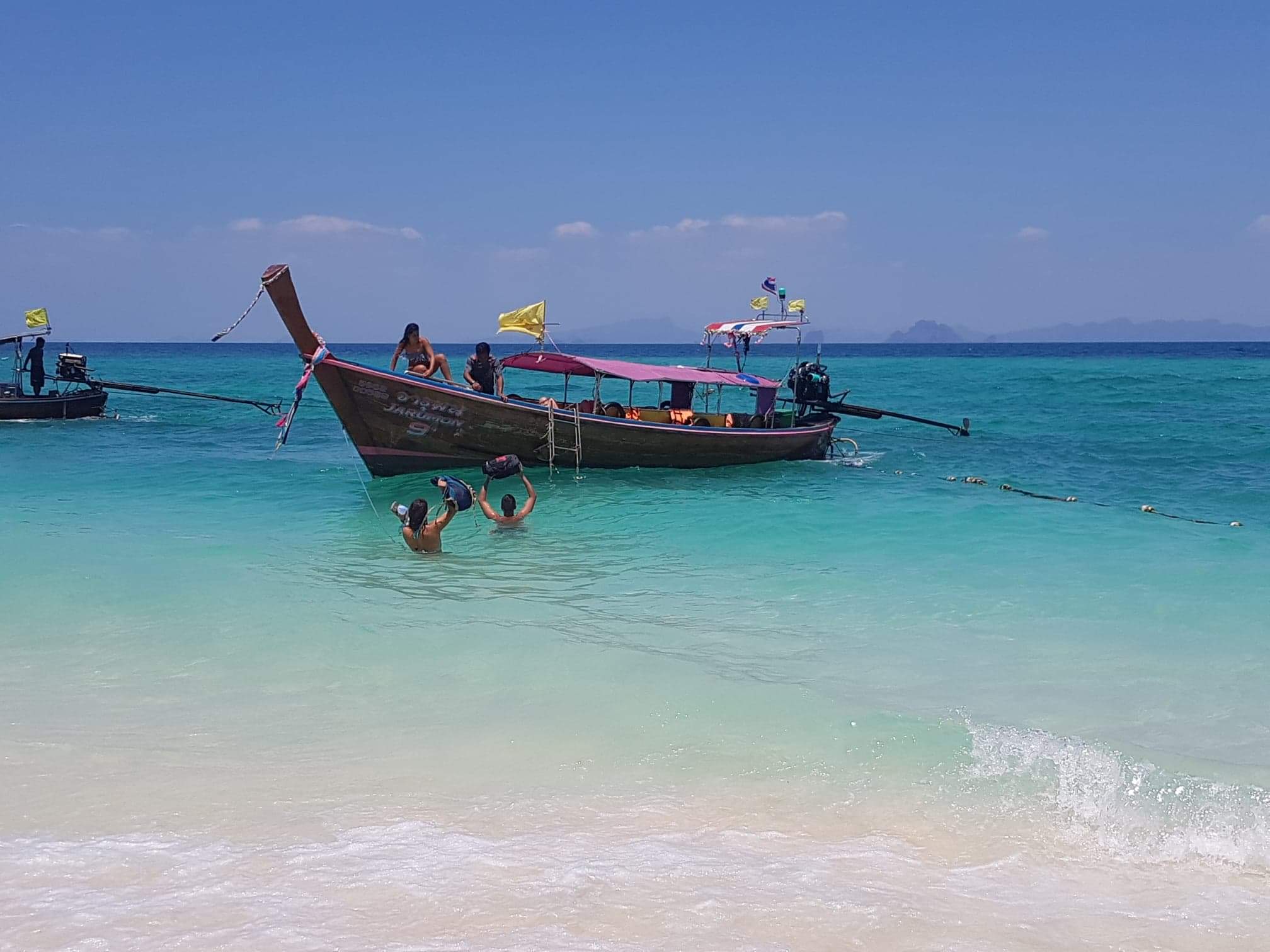
Thank you for sharing the summary and taking us back with you to this exciting trip. It seems 2020 was not so bad 😉 I wish you more trips in the near future :*
At least we travelled while we could! Thanks for the kind words 🙂
I love it! Excellent videography and summary, made me smile and rememer a time before we were banned from travellingl!! Can’t wait for the next installment in the travel series 🙂
Yes let’s hope for more again soon, thanks!